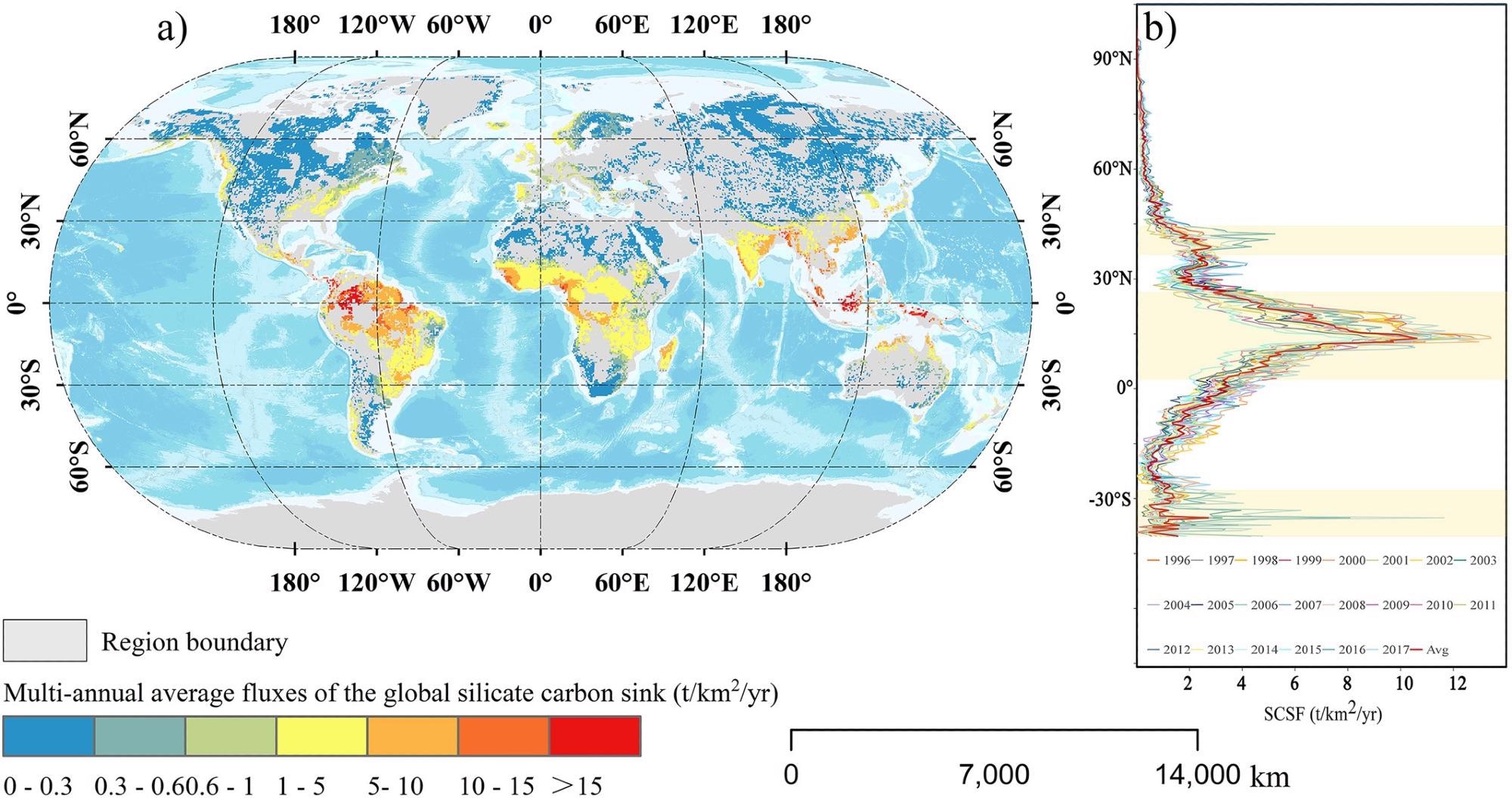May 17 2021
The global carbon cycle has been influenced by silicate carbon weathering sink (SCS)—the net carbon sink—for a period of more than millions of years. But the spatial pattern, magnitude, and evolution properties of global SCS are still not clear.
 Spatial distribution (a) and latitudinal variation (b) of average annual silicate rock weathering carbon sink flux during 1996-2017. Image Credit: Institute of Geochemistry of the Chinese Academy of Sciences.
Spatial distribution (a) and latitudinal variation (b) of average annual silicate rock weathering carbon sink flux during 1996-2017. Image Credit: Institute of Geochemistry of the Chinese Academy of Sciences.
Under the guidance of Professor Xiaoyong Bai from the Institute of Geochemistry of the Chinese Academy of Sciences (IGCAS), a research group has estimated the magnitude and spatio-temporal distribution of global silicate rock weathering carbon sink flux (SCSF) for 1996–2017. They have also estimated the SCSF under two future greenhouse gas emission scenarios.
The study was published in the journal Earth’s Future on April 20th, 2021.
The study findings illustrated that the area of silicate rocks worldwide was 6165.25 × 104 km2, accounting for around 41.38% of the global land area. The SCS was approximated as 127.11 Tg/year, and the SCSF of silicate rocks was 1.67 t/km2/year.
Global SCSF showed huge spatial heterogeneity, for example, 7% of the area of Brazilian silicate rocks contributes nearly a quarter of the global SCS.
Xiaoyong Bai, Professor, Institute of Geochemistry, Chinese Academy of Sciences
The SCSF changed significantly among various watersheds as a result of the zonal impact. The five major basins with yearly average SCSF were Essequibo Amazon, Magdalena, Orinoco, and Sepik. Sepik is the principal river that is located in northwestern Papua New Guinea, while the other four basins are situated in South America.
Moreover, the team discovered that the contributions of runoff and temperature to the variations in the SCSF were totally different. The contribution of runoff to the variations in the SCSF was mostly negative, whereas that of the temperature was largely positive. But the magnitude of temperature and contribution area were smaller compared to those of the runoff.
Although global SCS shows a downward trend, the future prediction (2041-2060) suggested an active response of SCS to the global warming trend and its carbon sink capacity was suggested to continue to rise.
Xiaoyong Bai, Professor, Institute of Geochemistry, Chinese Academy of Sciences
Furthermore, under extreme CO2 emissions, the global SCSF was estimated to rise by 23.8%, with the growth area concentrated in Australia and South America.
The study might fill up the SCSF’s large-scale data gap and offer a scientific foundation for quantitative evaluation of the effect of climate change on SCS.
The study was financially supported by the Strategic Priority Research Program of the Chinese Academy of Sciences, National Natural Science Foundation of China, Western Light Talent Program (Category A), and United fund of karst science research center.
Journal Reference:
Zhang, S., et al. (2021) Global CO2 Consumption by Silicate Rock Chemical Weathering: Its Past and Future. Earth’s Future. doi.org/10.1029/2020EF001938.